Bizarre ingredients
Who hasn’t glanced at the wrapper of a recently eaten snack and wondered, what the heck is guar gum, anyway? As much as consumers are encouraged to read labels, it doesn’t do much good if you can’t pronounce—much less understand—them. And unless you have a PhD in food science, odds are you won’t even recognize half the ingredients listed.
That’s not necessarily a bad thing, says Ginger Hultin, RDN, a registered dietitian nutritionist and spokesperson for the Academy of Nutrition and Dietetics. “Ascorbic acid, for example, is a form of vitamin C that is used as a preservative in food,” Hultin says. Some ingredients, though, have less-than-savory origins, even if there’s no evidence they cause any negative impact on your health. Some turn up in research with links to a health issue. “An association is not a cause, but consumers don’t want to eat foods that are in question,” says Bonnie Taub-Dix, RDN, a registered dietitian nutritionist and author of Read It Before You Eat It: Taking You from Label to Table.
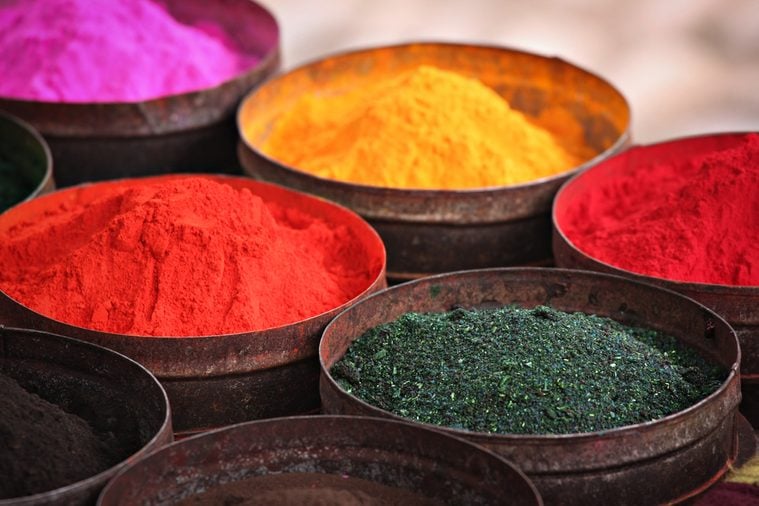
Bugs as food coloring
Starbucks faced a backlash in 2012 when it was revealed that some of the company’s Frappuccinos were colored using cochineal, or carmine, which is derived from insect shells. The chain has since phased out the additive. It now uses lycopene, a tomato-based extract, says Hultin, but you’ll still find the insect shell-derived ingredients in other products—like some drinks and candy—as a colorant. The additive makes a seemingly vegan-friendly product not so. It’s also known to trigger severe allergic reactions in some people. Here are 6 artificial food colors you need to know about.
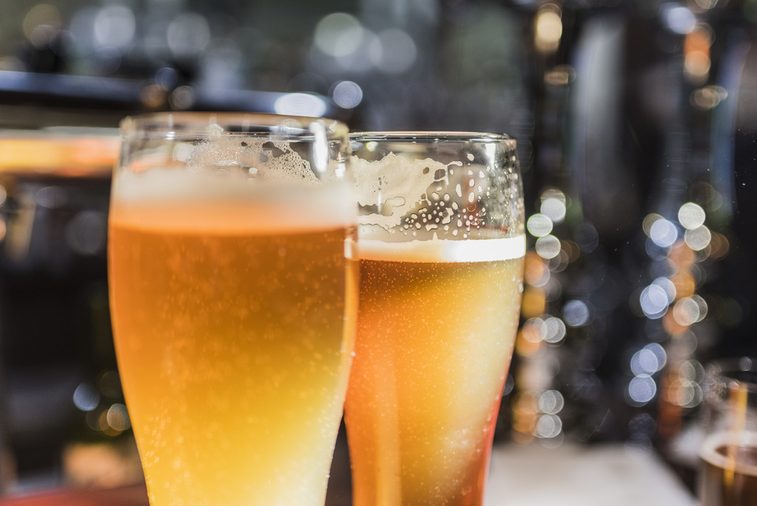
Fish bladders in beer
Isinglass, an ingredient derived from the organs of tropical fish, is used to filter some beers and wines. Public outcry caused at least one manufacturer, Guinness, to change its production and make its beverage vegan-friendly. A 2007 study published in the Journal of the Institute of Brewing found little chance that isinglass can trigger allergies in people who are allergic to fish, but many people still want to avoid fish products in their alcohol. Check out 14 unbelievable food facts that will change the way you eat.
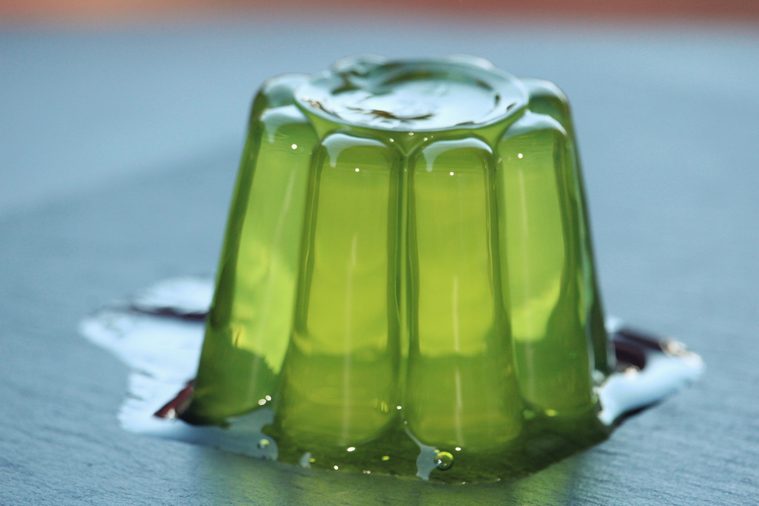
Pig skin in Jell-O
“Gelatin is something that most people are familiar with and often feel fine about consuming, but it is in fact made from animal connective tissue, commonly pigskin,” says Hultin. That puts anything containing gelatin on the do-not-eat list for vegetarians and vegans. As far as health concerns, gelatin can cause bloating, heartburn and allergic reactions in some people. Make sure you’re not falling for these 21 common food myths.
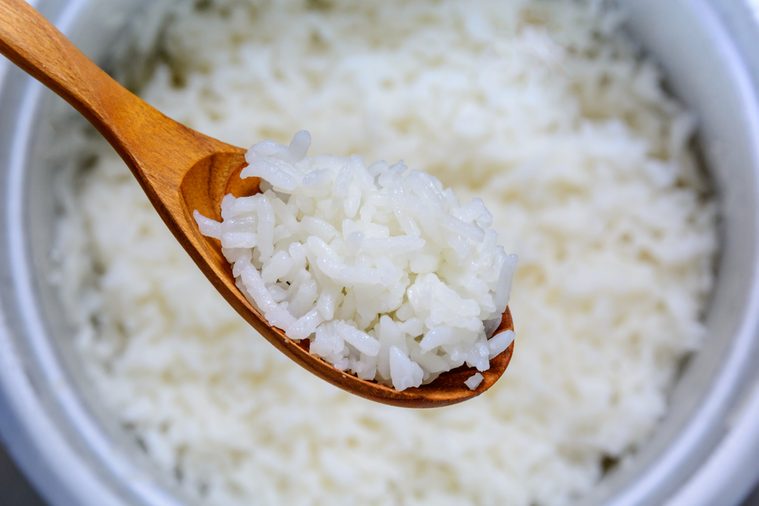
Arsenic in rice
For a time, arsenic was popular as a poison—for rats and humans. But small amounts of it are naturally found in certain plant-based foods, especially rice because of how it’s grown. Some research, including a study published in 2018 in the Journal of the National Cancer Institute, even shows that regular exposure to small amounts of the chemical could be carcinogenic. And a 2017 survey of arsenic contamination in 105 cereals suggests that infant cereals made with rice have six times the arsenic levels of other kinds of infant cereals. So what’s a rice lover to do?
“Low levels have not been found to be very concerning,” says Kristin Kirkpatrick, RD, a registered dietitian in Denver, Colorado. “However, if you want to take away all risk, then now is the time since rice alternatives are increasing by the day—from cauliflower rice to broccoli rice or rice made from veggies and lentils. Since many of those options are much more nutrient-dense they are a better alternative on many levels.” Check out these 9 steps to a low-carb diet.
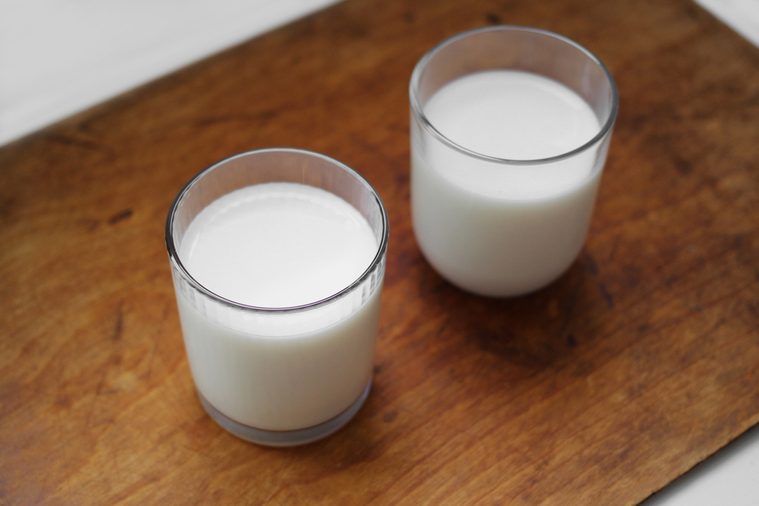
Seaweed in almond milk
You may have noticed some manufacturers slapping the term”carrageenan-free” on their non-dairy milk labels. That’s because the red seaweed extract, used as a thickener, is at the heart of a debate over whether it may be carcinogenic. Some scientists cite research claiming that carrageenan (CGN) is toxic to the digestive tract, while others cite separate research showing there is no valid reason to ban its use. A review of studies published in 2018 in the journal Food & Function found that more research is needed to reach a conclusion. And the Food and Drug Administration (FDA) concurs. So, for now, the jury’s out. Don’t expect a ruling anytime soon.
“It can take years for evidence to be collected to contribute to banning a product or ingredient—look how long it took to ban trans fat,” says Kirkpatrick. “The ingredients this additive is found in are sometimes foods that are more processed to begin with. If there is any concern at all, the remedy it to choose foods that have fewer ingredients overall, and especially ones that don’t have excess amounts of additives.”
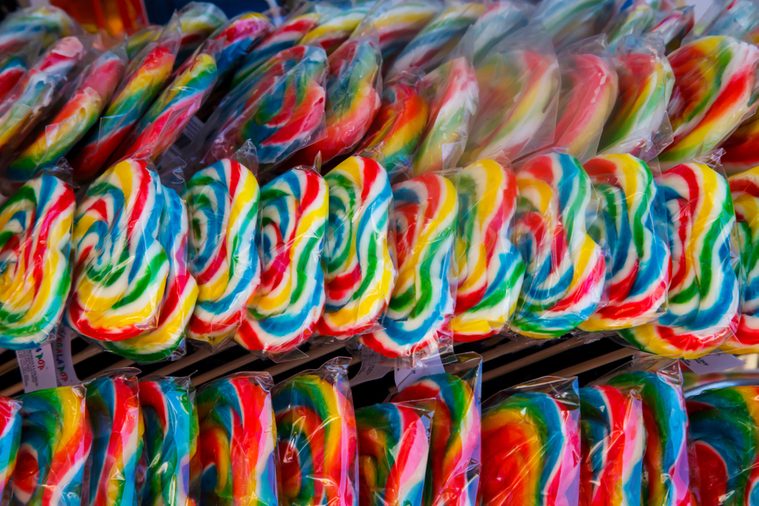
Car wax in candy
“I’ve seen carnauba wax in candies—the same stuff that’s in car wax,” says Taub-Dix. It’s generally used in shell-like coatings and, as Taub-Dix points out, may not be the worst ingredient you’ll find in candy. A study published in 2016 in LWT – Food Science and Technology, suggests that carnauba wax may also be a safe way to extend freshness in eggplant. The European Food Safety Authority reported in 2012 that carnauba wax is not expected to be absorbed by the body and use as a food additive is not a safety concern.
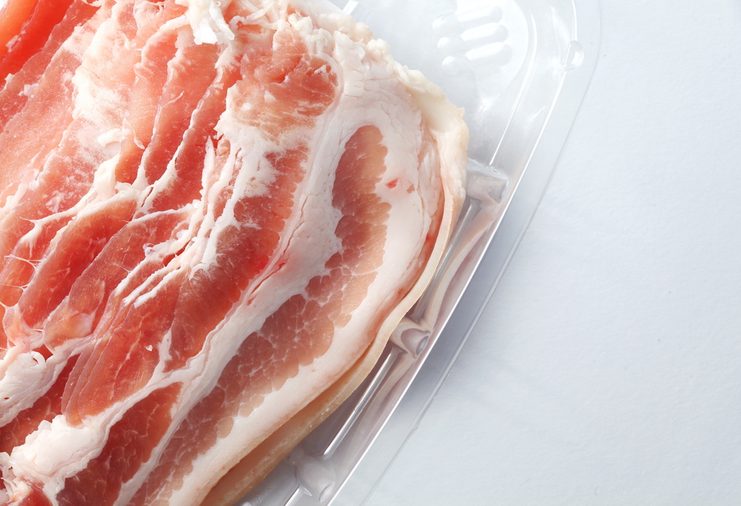
Carbon monoxide in meat
Exposure to oxygen can cause red meat to lose its crimson color and look unappealing (even when it’s still safe to eat). So some meat manufacturers pump the air out and add a tiny bit of carbon monoxide—yup, the same stuff that comes out of your car’s tailpipe—to the package so it keeps its color. “The process is banned in some areas of the world for several reasons,” says Kirkpatrick. “One main concern is that the process can make the meat look good even after it has spoiled so consumers may not know that their meat has gone bad because it still looks OK.” Meat lovers should “choose more wild options, and/or to find out more about the farms where their meat comes from,” suggests Kirkpatrick. “Going smaller, and local, may be a wise choice for people who want to know more about the processing of their meat.” Check out the 8 golden rules of having a healthy grilling season.
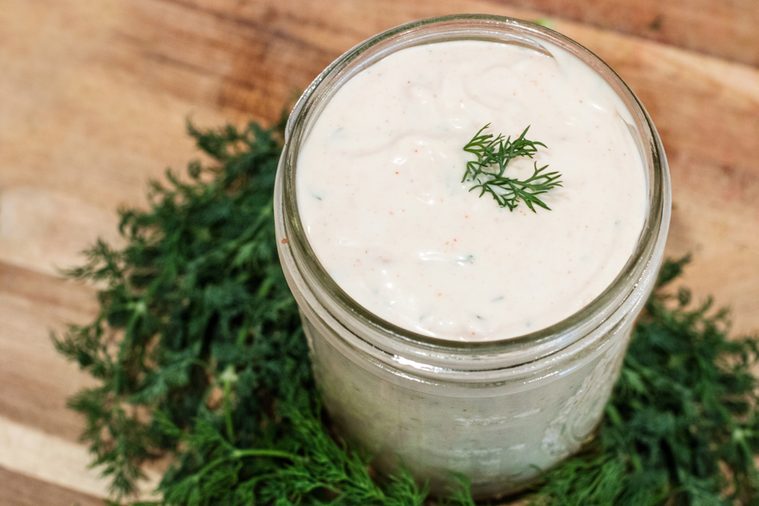
Sunscreen in salad dressing
One of sunblock’s most recognizable ingredients, titanium dioxide, is added to some bottled dressings and other foods to help keep it shelf-stable by—surprise—blocking light, which can degrade the other ingredients. Titanium dioxide was one of the “unacceptable” ingredients Panera restaurants removed from its menu in 2016. Here are 11 ways you never realized you’re reading food labels wrong.
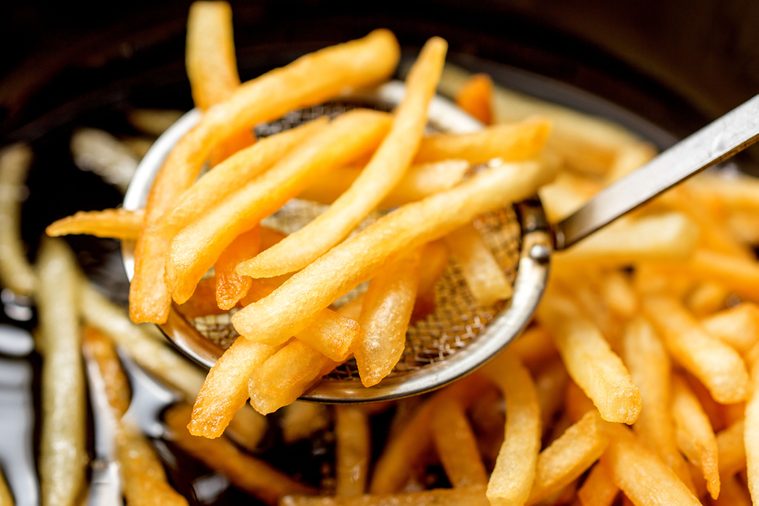
Silicone in French fries
The chemical dimethylpolysiloxane, found in the now-ubiquitous substance used to make everything from phone cases to breast implants, is added to cooking oil in fast food restaurants. And, oddly enough, not only is it not harmful, but a study published in 2018 in Biomaterials found that it may one day be used to help find a cure for baldness.
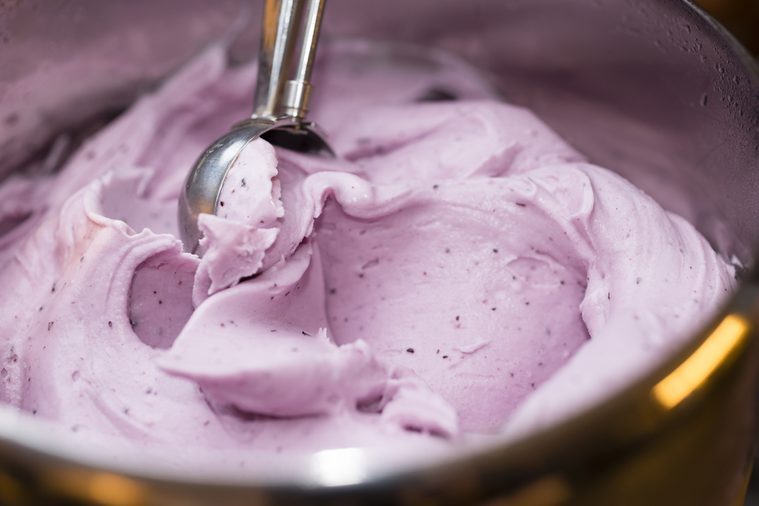
Beaver glands in ice cream
Another reason to beware the vague term “natural flavor”: It can include castoreum, a surprisingly pleasant-smelling chemical secreted by beavers. According to a study published in 2007 in the International Journal of Toxicology, low-level, long-term exposure to castoreum extract does not pose a health risk. Here are some things food manufacturers won’t tell you.
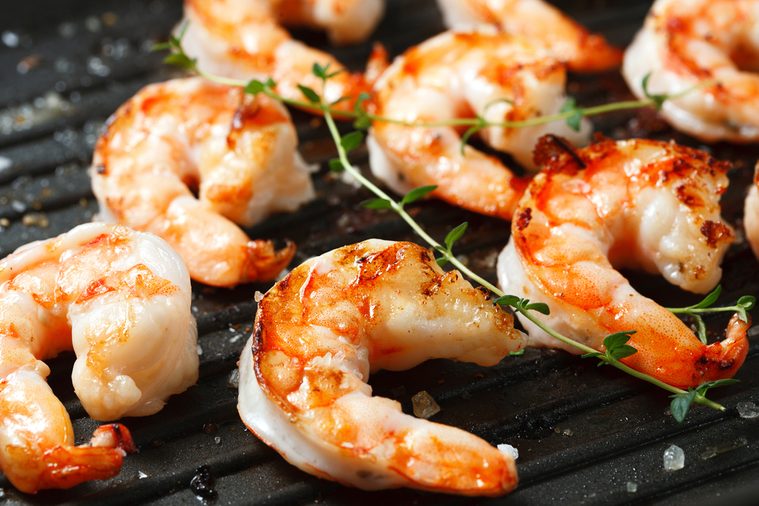
Collagen in shrimp
Another good reason to buy local: Several Asian countries, including Vietnam and China, have reported cases of shrimp tampering in which sellers inject tiger prawns with a gel to increase their weight. Among the ingredients in the gel is collagen, the protein famously known for its lip-plumping prowess. Here are the 7 best fish to eat—and 5 to never eat.
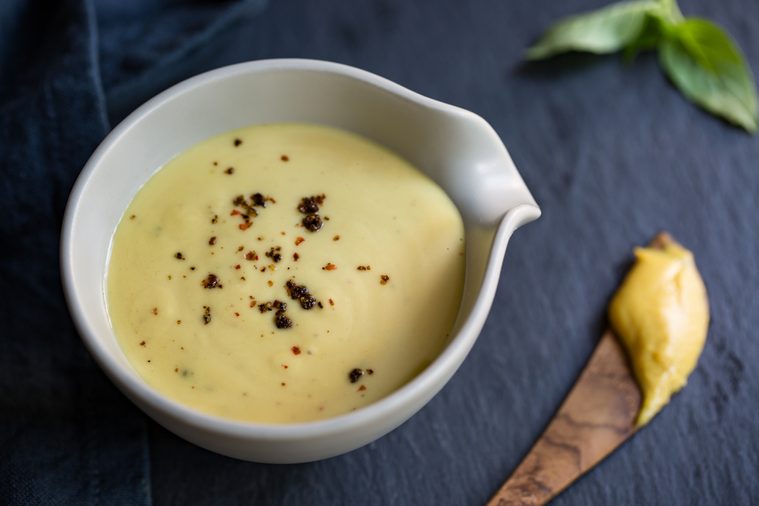
Coal tar in mustard
Yellow dye #5—a.k.a. tartrazine—is the second most popular colorant in food. “It’s a synthetic dye that can cause allergic reactions in some people,” says Mascha Davis, RDN, a registered dietitian nutritionist in Los Angeles and spokesperson for the Academy of Nutrition and Dietetics. “It’s cheaper than natural food dyes and has been banned in some countries.” After it was found to increase hyperactivity in children, Kraft Foods dropped the ingredient from its boxed macaroni and cheese in 2016, but it remains in many other products under several names.

Duck feathers in pizza
The amino acid L-cysteine, which is found in duck feathers as well as human hair, is used in many dough-based products. “It’s considered quite safe, but if consumed in very high doses—which is unlikely—it has the potential to cause some unwanted side effects like nausea, vomiting, diarrhea, and constipation,” says Davis. Here are 11 common ways people read nutrition labels wrong.